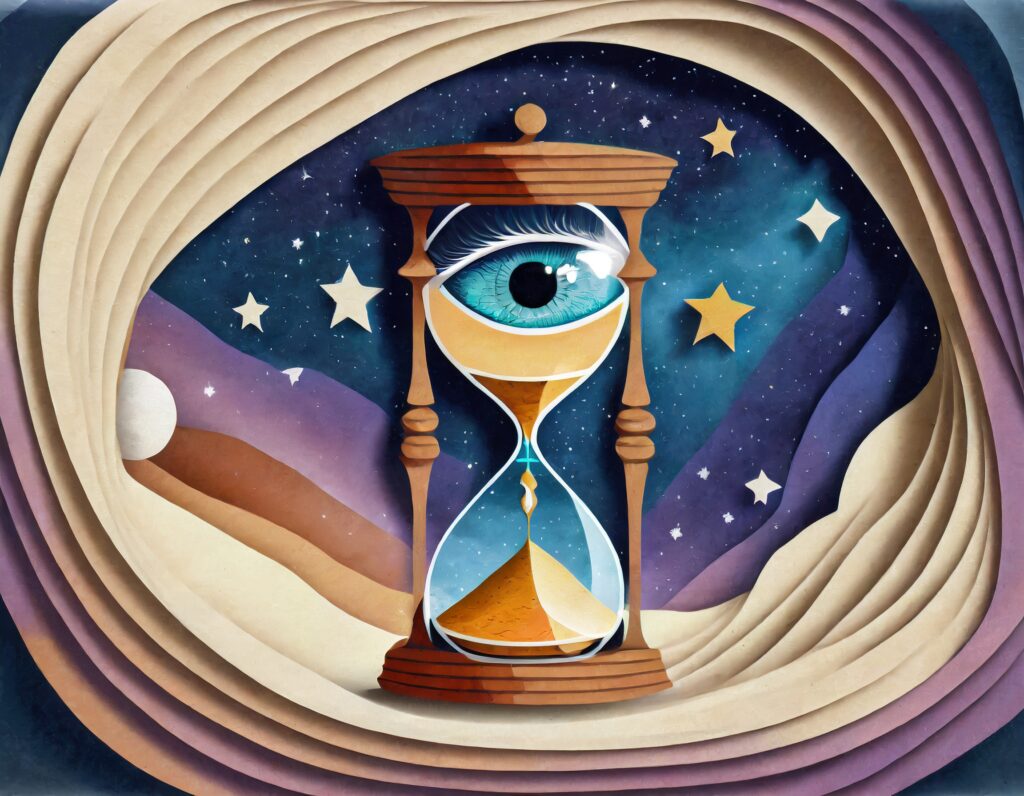The Arrow of Time Paradox: Exploring the Mysteries of Time’s One-Way Flow
Time, a concept that has fascinated humans since the dawn of civilization. As we go about our lives, we experience time as a linear progression, always moving forward. However, the concept of time is not as straightforward as it seems. In the realm of physics, the arrow of time paradox has puzzled scientists for decades. This paradox challenges our understanding of time’s one-way flow and raises intriguing questions about the nature of our universe.
What is the Arrow of Time?
The arrow of time refers to the idea that time has a preferred direction, moving from the past to the future. In everyday life, this concept is evident through our experiences of aging, the growth of plants, and the irreversible nature of events. However, when we delve into the realm of physics, things become more complex.
In classical physics, the fundamental laws of nature are time-symmetric, meaning they are valid regardless of whether time is moving forward or backward. For example, if we were to reverse the motion of every particle in a system, the physical laws would still hold. This symmetry raises a puzzling question: If the laws of physics are time-symmetric, why do we only experience time moving forward?

Entropy and the Arrow of Time
To understand the arrow of time, we need to delve into the concept of entropy. Entropy is a measure of the disorder or randomness of a system. According to the second law of thermodynamics, the entropy of a closed system tends to increase or, at best, remain constant over time. This law gives rise to the arrow of time, as it provides a directionality to the flow of events.
Imagine a cup of hot coffee placed in a room. Over time, the coffee will cool down, and its heat will dissipate into the surrounding environment. This process is irreversible, and the entropy of the system increases. If we were to reverse the motion of particles, we would witness the coffee spontaneously becoming hotter, which violates our everyday experience.
The increase in entropy is what gives the arrow of time its directionality. It explains why we remember the past but not the future and why broken objects do not spontaneously reassemble themselves. The arrow of time is deeply rooted in the second law of thermodynamics and the concept of entropy.
Challenges to the Arrow of Time
While the arrow of time seems intuitive in our everyday experience, it poses significant challenges in the realm of fundamental physics. One such challenge is the concept of time symmetry in the fundamental laws of physics. The laws of physics, as we currently understand them, do not distinguish between past and future, raising questions about why we experience time moving forward.
Additionally, some theories, such as certain interpretations of quantum mechanics, suggest that time may not be fundamental but rather emergent from underlying quantum processes. These theories challenge our understanding of the arrow of time and raise the possibility that the concept itself may need to be redefined.
Time’s Arrow in Cosmology
The arrow of time is not only relevant on a microscopic scale but also on a cosmic scale. Cosmologists study the origins and evolution of the universe, and the arrow of time plays a crucial role in understanding these processes.
The prevailing theory of the universe’s origin, the Big Bang theory, suggests that the universe began in a state of extremely low entropy. As the universe expanded and evolved, the entropy increased, giving rise to the arrow of time. However, the question of why the universe started in such a low-entropy state remains unanswered, and it is an active area of research in cosmology.
Conclusion
In conclusion, the arrow of time paradox challenges our understanding of time’s one-way flow. While the fundamental laws of physics are time-symmetric, our everyday experience tells us that time only moves forward. The concept of entropy and the second law of thermodynamics provide a directionality to time’s flow, but it raises questions about why the laws of physics do not distinguish between past and future.
The arrow of time is a complex and intriguing phenomenon that continues to puzzle scientists. The challenges it poses in the realm of fundamental physics and cosmology highlight the gaps in our understanding and the need for further research. As we continue to explore the mysteries of time, the arrow of time paradox remains a fascinating area of scientific inquiry.
Frequently Asked Questions about The Arrow of Time Paradox: Exploring the Mysteries of Time’s One-Way Flow
1. What is the Arrow of Time?
The Arrow of Time refers to the notion that time flows in a single direction, from the past to the future. It is a fundamental concept in physics that suggests there is an inherent difference between the past and the future.
2. What is the Arrow of Time Paradox?
The Arrow of Time Paradox arises from the apparent contradiction between the time-reversible laws of physics and the observed irreversible nature of time. While the fundamental laws of physics do not differentiate between past and future, our everyday experiences clearly show that time has a one-way flow.
3. How does the Arrow of Time relate to entropy?
Entropy is a measure of the disorder or randomness in a system. The Arrow of Time is intimately linked to the concept of entropy. The second law of thermodynamics states that in any isolated system, the entropy tends to increase over time. This increase in entropy aligns with the observed one-way flow of time.
4. Can the Arrow of Time be reversed?
While the Arrow of Time appears to be irreversible in our macroscopic world, some physicists argue that it might be possible to reverse the arrow on a microscopic scale. Certain quantum phenomena, such as quantum entanglement and time symmetry, have been proposed as potential avenues for reversing the Arrow of Time. However, this remains a topic of ongoing research and speculation.
5. What are some proposed explanations for the Arrow of Time?
Several theories have been put forth to explain the Arrow of Time. One prominent explanation involves the Big Bang. The universe started in a state of low entropy and has been evolving towards higher entropy ever since, giving rise to the observed one-way flow of time. Other theories suggest that the Arrow of Time is a consequence of the universe’s expansion and the nature of quantum mechanics.
6. Are there any philosophical implications of the Arrow of Time?
The Arrow of Time has significant philosophical implications. It raises questions about determinism, free will, and the nature of causality. If time were reversible, would our actions still hold consequences? Would our choices matter? These philosophical debates continue to captivate both physicists and philosophers.
7. How does the Arrow of Time impact our daily lives?
The Arrow of Time shapes our perception of reality. It influences our experiences, memories, and the way we plan for the future. It also plays a crucial role in the functioning of various natural processes, such as the aging of living organisms and the progression of ecological systems.
8. Can the Arrow of Time be fully understood?
Understanding the nature of the Arrow of Time remains an ongoing scientific and philosophical endeavor. While numerous theories and explanations exist, a complete understanding of this paradox has yet to be achieved. Researchers continue to explore this fascinating topic, pushing the boundaries of our knowledge about time and the universe.
In conclusion, the Arrow of Time Paradox is a captivating subject that bridges the realms of physics, philosophy, and everyday life. Its exploration challenges our understanding of the fundamental nature of time and continues to fuel scientific inquiry into the mysteries of time’s one-way flow.


